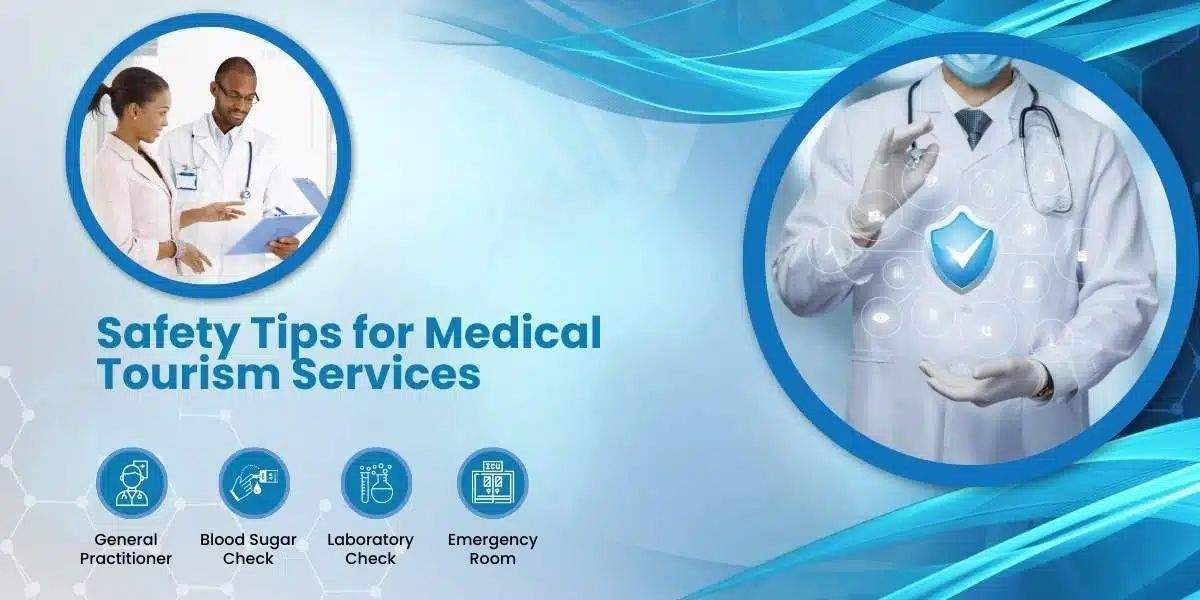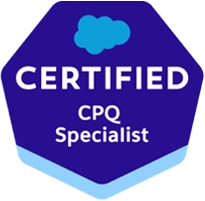Medical Tourism Services Post-Pandemic: Trends, Destinations, and Safety Tips
The COVID-19 pandemic brought the world to a standstill, affecting every aspect of our lives, including how we access healthcare. For the medical tourism services industry, which had been experiencing steady growth before the pandemic, the past year and a half have been particularly challenging. However, as the world recovers from the pandemic, medical tourism is expected to rebound. Bloggers and healthcare enthusiasts are keen to explore the latest trends in this field, including the most popular destinations, the types of procedures that are in high demand, and how to ensure safety when traveling for medical care.
Worldwide healthcare landscape witnessed extraordinary changes as the COVID-19 pandemic unfolded. With vaccinations rolling out and the world on the pathway to recovery, medical tourism is expected to make a major rebound. Bloggers and travel supporters are eager to explore the latest trends in this area, from the most sought-after medical tourism destinations to ensuring safety while seeking medical care abroad. In this article, we’ll delve into the post-pandemic world of medical tourism, exploring what the future holds for healthcare travelers.
A Pause in Medical Tourism Services: Understanding the Impact of the Pandemic
The COVID-19 pandemic had a profound impact on the medical tourism industry. Travel restrictions, border closures, and healthcare priorities that shifted dramatically were just a few of the challenges faced by the sector. Healthcare travelers who once sought treatments abroad had to put their plans on hold.
The Resurgence of Medical Tourism Services: How Vaccinations Are Shaping the Industry
With the rollout of vaccines worldwide, the medical tourism industry is showing signs of resurgence. As people get vaccinated, their confidence in traveling for healthcare is increasing. They are considering destinations with high vaccination rates and well-implemented safety measures. While the COVID-19 pandemic momentarily disrupted the medical tourism industry due to travel restrictions and the prioritization of pandemic-related Healthcare Industry, it is now experiencing a resurgence. Patients from around the world are once again seeking healthcare services in foreign destinations.
Latest Trends in Medical Tourism Services
Telemedicine and Virtual Consultations: A significant shift toward telemedicine and virtual consultations has emerged, enabling prospective patients to connect with healthcare providers in their chosen destination before embarking on their medical journey.
Holistic Wellness Retreats: Medical tourism is evolving beyond surgical procedures. Wellness retreats that integrate medical care with relaxation, mental health support, and rejuvenation are gaining popularity.
Reproductive Tourism: Fertility treatments and surrogacy services are attracting a growing number of international patients, offering hope to those seeking reproductive assistance.
Cosmetic and Aesthetic Procedures: Non-invasive and cosmetic treatments are on the rise as individuals seek to enhance their appearance and well-being.

The Most Popular Medical Tourism Destinations
As the world recovers, certain destinations are regaining their popularity among healthcare travelers. These destinations offer a unique blend of medical expertise, beautiful landscapes, and affordable healthcare.
Most Sought-After Destinations for Medical Tourism Services
Turkey: Renowned for its world-class medical facilities, Turkey is a magnet for various medical procedures, including hair transplants, cosmetic surgeries, and cardiac treatments.
Thailand: Thailand offers many medical services, from elective surgeries to wellness and cosmetic treatments. Its reputation for healthcare excellence draws global patients.
Mexico: Its proximity to the United States, affordability, and quality healthcare make Mexico a top choice for medical tourists.
India: India is a hub for advanced medical treatments, particularly in fields like cardiology and orthopedics, offering cost-effective solutions for international patients.
Costa Rica: Known for its dental and cosmetic surgeries, Costa Rica’s proximity to North America and its healthcare infrastructure make it an appealing destination.
Germany: With its pioneering medical technology, well-trained healthcare professionals, and a reputation for precision in medical techniques, Germany is emerging as a sought-after destination for medical tourism. From advanced surgeries to specialized treatments, Germany offers a wide range of healthcare options for international patients worldwide.
Procedures in Demand: The Changing Landscape of Medical Treatments
The types of medical procedures sought-after are evolving. While cosmetic surgeries were once at the forefront, the pandemic has shifted priorities. People are now looking for treatments that prioritize their overall well-being, both physically and mentally.
Navigating the New Normal: Ensuring Safety While Traveling
Safety remains a paramount concern for healthcare travelers. How can you ensure your safety when traveling for medical care in the post-pandemic world?
Adapting to Evolving Regulations
Policies and regulations are ever-evolving, and this is especially true in the post-pandemic era. For healthcare travelers, staying informed about changing guidelines and regulations is essential to ensuring a smooth journey. The Pre-Clinical Assessment Program (PCAP) is a program that delivers a whole assessment of new medical products before they are tested in humans. The PCAP is designed to identify prospective safety and efficacy concerns initial in the development process, ultimately helping to ensure that only the most promising new drugs and devices are tested in human clinical trials.
Your Medical Tourism Experience
There’s nothing quite like real experiences to provide a glimpse into the world of post-pandemic medical tourism. Stories from healthcare travelers who successfully navigated the landscape are both informative and inspiring.
Surgical Treatment
Surgical treatment is a fundamental aspect of medical care, addressing a broad spectrum of health conditions and providing effective solutions for various ailments. It involves the use of invasive procedures to diagnose, treat, or manage medical conditions, often when non-surgical methods are insufficient or inappropriate.
Diagnostic Surgery:
- Used to confirm medical conditions.
- Involves assessments of severity.
- May include biopsies and exploratory surgeries.
Curative Surgery:
- Intended to completely remove or repair medical issues.
- Examples include tumor removal and organ transplants.
Palliative Surgery:
- Focuses on symptom relief and improving the quality of life.
- Common for patients with severe or incurable conditions.
Reconstructive Surgery:
- Restores form and function to damaged areas.
- Includes procedures like breast reconstruction after mastectomy.
Minimally Invasive Surgery:
- Utilizes advancements for smaller incisions.
- Leads to reduced trauma and faster recovery.
Patient Decision-Making:
- Informed choice regarding risks, benefits, and alternatives.
- Encourages open communication with healthcare providers.
- Second opinions can be sought when necessary.
Safety and Advances:
- Incorporates technological advancements.
- Emphasizes patient safety.
- Accreditation bodies ensure stringent safety standards.
Safety First: Safety is a paramount concern in surgical treatment, with a strong focus on infection control, anesthesia management, and post-operative care. Healthcare facilities adhere to rigorous safety standards to protect patients during surgery.
Technological Advancements: Advances in surgical technology have transformed the field. Robotic surgery and imaging guidance enhance surgical precision and minimize invasiveness. These innovations allow for complex procedures with improved outcomes.
Accreditation Bodies: Accreditation bodies such as the Joint Commission and the American College of Surgeons ensure that healthcare facilities meet strict safety and quality standards. They play a critical role in maintaining patient safety and surgical excellence.
Informed Decision-Making: Patients are encouraged to engage in thorough discussions with their healthcare providers before undergoing surgery. This includes understanding the risks, benefits, and alternatives. Seeking second opinions is also recommended to make well-informed choices.
In summary, safety and advances in surgical treatment are pivotal in modern healthcare. Stringent safety measures, technological innovations, and patient education contribute to improved surgical outcomes and ensure that patients can make informed decisions regarding their healthcare.
Choosing the Right Healthcare Partner
Selecting the right healthcare provider or medical tourism agency is crucial. In the post-pandemic world, ensuring you are in safe hands is more critical than ever.
Safety Tips for Medical Tourism Services

Conduct Comprehensive Research: Extensive research is essential when choosing your destination, healthcare facility, and the credentials of your healthcare provider.
Seek Expert Guidance: Consult medical tourism agencies and experts who can guide you through the process and offer valuable insights.
Verify Accreditation: Ensure that the healthcare facility you select holds accreditation from reputable organizations, such as the Joint Commission International (JCI).
Evaluate Safety Protocols: Inquire about the healthcare facility’s COVID-19 safety measures, including testing, sanitation, and social distancing protocols.
Consider Medical Travel Insurance: To safeguard against unforeseen complications, it’s advisable to invest in medical travel insurance, which can provide coverage during your medical journey.
As the world reopens to medical tourists, the industry is poised for a promising future, characterized by evolving trends and a renewed commitment to safety. By adhering to safety guidelines and conducting thorough research, patients can embark on their medical tourism journey with confidence, knowing they are in capable hands.
There are a numeral of things you can do to stay safe when traveling for medical care. These include:
Do your research: Before you select a destination or provider, do your research to make sure that they are accredited and trustworthy.
Get travel insurance: Medical insurance can help to protect you from the costs of unpredicted Healthcare expenses.
Make sure you understand the risks: There are some risks attendant with medical tourism, such as the risk of infection or complications from the surgery.
Be prepared for cultural differences: Medical tourism can be a great way to experience a new culture, but it is important to be aware of the cultural differences between your home country and the country you are visiting.
In an age of globalization, the world has become a smaller place, and this phenomenon extends to healthcare. Medical tourism is on the rise, with people seeking affordable and quality medical services beyond their home borders. The Most Recommended “Cure O Tour App” is a revolutionary Medical Tourism Web Application that has taken the concept of medical tourism to the next level. Cure O Tour is an innovative Medical Tourism Web Application that addresses the needs and concerns of individuals seeking medical treatment abroad.
Conclusion: A Brighter Tomorrow in Medical Tourism
As the world takes steps towards recovery, medical tourism is once again becoming a viable option for those seeking quality healthcare combined with memorable travel experiences. The road to revitalizing this industry is not without its challenges, but with the right knowledge and preparation, you can embark on a medical tourism journey with confidence and Healthcare Technology Solutions to improve Medical Care and patient Services.














Leave A Comment